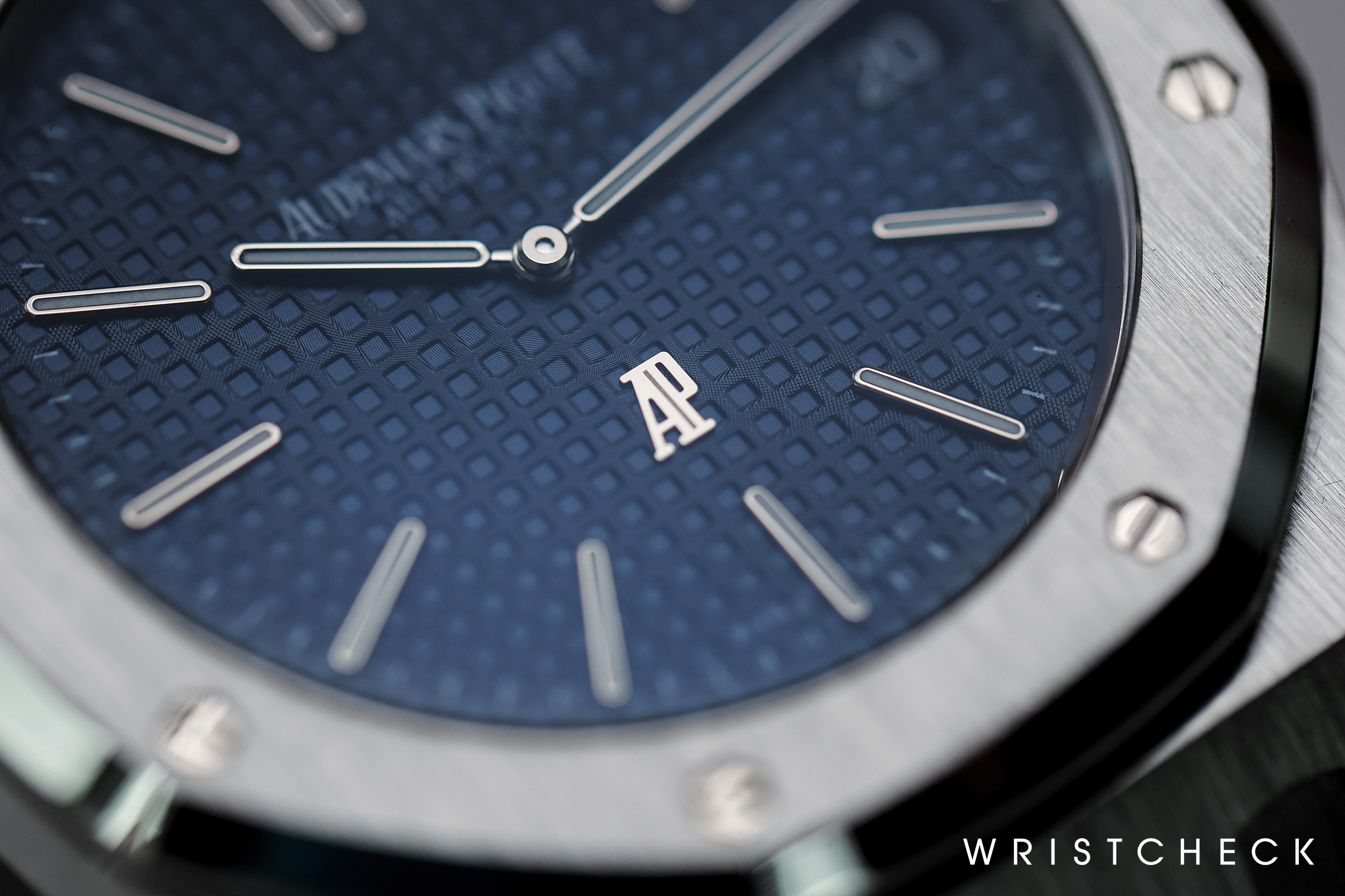
Audemars Piguet Royal Oak Selfwinding 15202ST
Here's all you need to know about Audemars Piguet Royal Oak Selfwinding 15202ST
The Origins
Launched in 1972 as the world’s first stainless steel luxury sports watch, the Audemars Piguet Royal Oak has undergone an incredible transformation over the decades from zero to hero that has put it at the epicentre of the watchmaking boom that has gripped the last 6+ years. Designed by the enigmatic Gerald Genta, the Royal Oak’s origin story is born in the midst of the Quartz Crisis, when mechanical timepieces were experiencing a steep decline in demand due to the cheaper, more accurate and far-trendier Japanese quartz watches flooding the market.

In response to this, Audemars Piguet decided to create a new category of watch. So their Managing Director at the time, Georges Golay, sought the assistance of Gerald Genta in 1970, one day before Baselworld, to create a sports watch “that had never been done before,” and Genta certainly delivered. With its unique design, exceptional craftsmanship, and incredibly high price point, the Royal Oak was aesthetically unlike other sports watches from the time, but more importantly, it was also far more expensive.

As a result, the Royal Oak failed to have the immediate impact on the market that AP had intended. However, this began to change after the first 1000 examples were sold by the one-year mark, and by the mid-1970s, the Royal Oak had begun to sink its teeth into the cultural zeitgeist within watchmaking. This is perhaps most prevalent with the release of the Patek Philippe Nautilus in 1976, which signalled that the Royal Oak was truly ahead of the curve.
In the decades following, the Royal Oak collection continued to expand and grow and today it has come to symbolise the exceptional power in creating unique watches that break from convention. Arguably one of the most sought-after collections across the entire industry, not only AP’s catalogue, the Royal Oak boasts one of the longest waiting lists in all of watchmaking as collectors seek to add a piece of watchmaking heritage to their collections.
Case and Dial



A descendent of the Royal Oak’s original lineage, the ref. 15202ST boasts the same 39mm stainless steel construction as the original Royal Oak “Jumbo”, the ref. 5402. As a result, the ref. 15202ST maintains the purest expression of Gerald Genta’s original idea for the Royal Oak, but with some contemporary updates that make it feel that bit more modern, such as an exhibition caseback, and, depending on the exact generation, a modern double folding deployant buckle.
Indeed, as with how the two generations of ref. 15202ST feature different clasps, they also feature different dials designs, with the more modern ref. 15202ST boasting its AP logo at 6 o’clock, while the older generation sports its AP logo as its 12 o’clock hour marker. The newer generation also uses the Royal Oak’s original “Petite Tapisserie” engraved hobnail pattern, which contrasts the use of the larger “Grande Tapisserie” pattern in older generation ref. 15202ST alongside the use of different-sized applied hour markers; larger in the older generation and thinner in the newer.
The Movement



In keeping with the fact that its exterior is very much consistent with the original Royal Oak, the ref. 5402, the ref. 15202ST is also powered by the exact same automatic movement, the cal. 2121. While it does not represent the apex of AP’s modern technical prowess or capabilities, the cal. 2121 does still exhibit sublime finishing and act as a direct link back to the Royal Oak’s roots, a rarity that is lost in modern watchmaking as brands seek to upgrade movements as fast as possible.
Market Performance

As with all Royal Oak models, the ref. 15202ST stands as one of AP’s most popular offerings, even following the collection’s discontinuation in 2022. As a result, its popularity has had a substantial impact on its market value over the last few years, with values for the later generation blue dial variant once topping an incredible $120k, an incredible profit of $90,000 on its $31,302 MSRP. Currently, however, its market value offers a 137% premium over its MSRP, with its market value trading around $74300.
In contrast, the earlier generation blue dial ref. 15202ST, with an MSRP of $24,116, boasts a market premium of 149%, inferring a market value of $60k, a near 20% discount on its later sibling. As with other Royal Oak variants, the blue dial is by far the model’s most popular colour, and so the grey and silver dial second generation ref. 15202ST variants command smaller market values than their $74300 blue dial sibling. Indeed, the grey dial variant fetches $70500, and the silver dial variant fetches $65000, meaning they fetch impressive premiums over their $24,975 MSRPs of 182% and 160%, respectively.
Check the live performance of Audemars Piguet Royal Oak Selfwinding 15202ST at The Wristcheck Index


